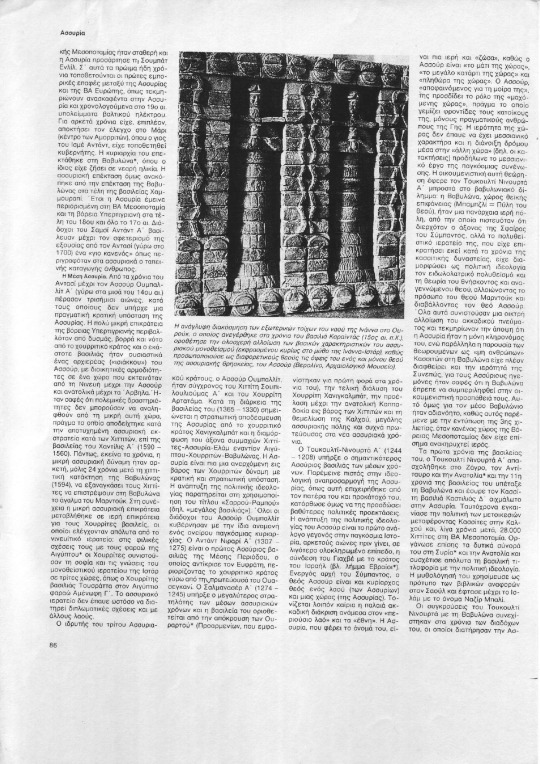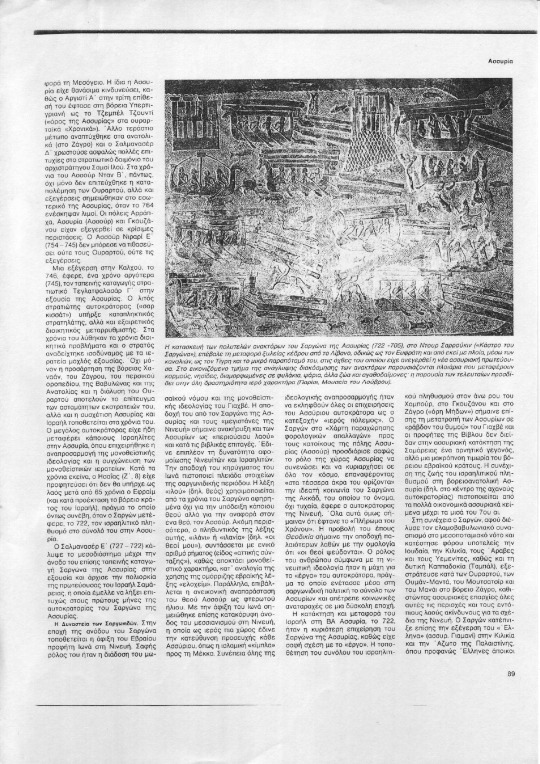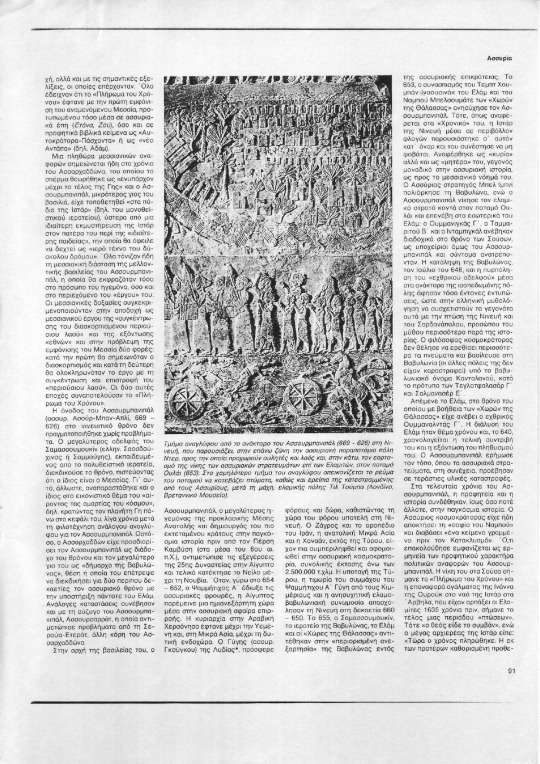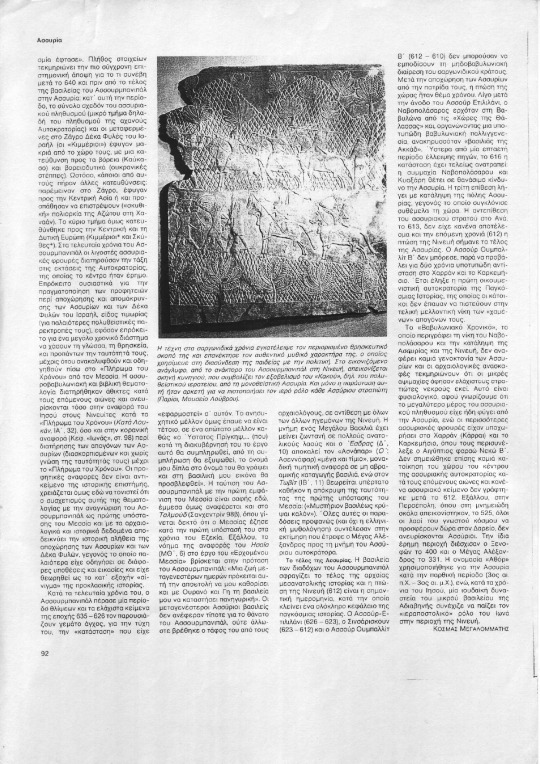#Shamsi Adad I
Explore tagged Tumblr posts
Text
Assyria - World History, Greek Pedagogical Encyclopedia, Ekdotike Athenon
Ασσυρία - Παγκόσμια Ιστορία Εκδοτικής Αθηνών 1990
Ассирия - всемирная история, Греческая педагогическая энциклопедия, Экдотика Афинон









--------------------------
Κατεβάστε το άρθρο: / Download the article: / Скачать статью:
issuu
#Assyria#History of Assyria#Sargonid#Tiglath-pileser I#Shamsi Adad I#Tiglath-pileser III#Shalmanaser III#Assurnazirpal II#Semiramis#Tukulti Ninurta I#Mesopotamia#Babylonia#Elam#Hurrians#Hittites#Neo-Hittites#Assurbanipal
1 note
·
View note
Photo

Semiramis, ancient Babylonian Queen unknown/hidden to many.
Semiramis, “She of the Doves” by Initiate and Priestess Maya I have chosen Semiramis because I have never heard of Her. As a female founderof the great ancient city of Babylon which held one of the Seven AncientWonders of the World, I find Her intriguing. (I also like Her name). Of course,I had to choose a Goddess about whom the least is known!
The story of Semiramis has been hidden so deeply, it is almost obscure. Semiramiswas a Queen of the ancient Assyrian Empire. She was famed for Her great beauty,strength, wisdom, voluptuousness and alluring power. SHE is the one who builtBabylon with its hanging gardens, not Nebuchadnezzar who got the credit forit! As usual with ancient records, much of Her accomplishments were laterattributed to a man. So, Semiramis was the architect of the great hanginggardens known all over the world with its remarkable irrigation system, oneof the Seven Ancient Wonders of the World. She must have been a remarkablewoman. She built many other cities and was a great conqueror. Her conquestsincluded Egypt, Ethiopia, much of Asia and she warred against the Medes andChaldeans. She was not successful in India, where She narrowly escaped withHer life by destroying a bridge that She had built while being seriouslyhurt.
It is said of Her that she was a great beauty and yet had a man’s mind andstrength of will. Clearly, we have here a woman who perhaps surpassed theescapades of some of the greatest conquerors of history, yet, we know solittle about Her. (Maybe because She was a woman?) She was a woman with theintellect of a genius, commander of a great and successful army, founderan empire and builder of one of the most beautiful Wonders of the World.
Her husband was King Nimus (perhaps derived from the Assyrian Nunu meaningfish). Nimus was the son of Bel which evolved into the Caananite Baal andlater was identified with the Greek God, Cronos. Nimus is said to be theinventor of warfare and the first to assemble huge armies for conqueringother lands.
Legend of Semiramis’ Birth There is a legend that tells of the birth of Semiramis. She was abandonedby Her Goddess mother due to a trick played on Her mother by Aphrodite(Ashtaroth). Doves found the infant Semiramis and provided milk and cheesefor Her stolen from local shepherds. The shepherds found the Infant in nearbyAcacia shrubs. They took Her to their Chief of the Royal Herds who raisedHer as his own and gave Her the name Semiramis which translates: “The OneWho Came from the Doves.”
She married one of the King’s advisors and generals, named Onnes. They hada set of twins: Hyapate and Hydaspe. Her husband achieved great success dueto the advice of Semiramis. King Ninus, in conquering Bactria, sent for GeneralOnnes. Semiramis joined her husband on the battlefield. She took over a groupof soldiers and due to Her advice and leadership, the Battle of Bactria waswon. Ninus forced Onnes to give up his wife to him. Onnes, in despair, hunghimself.
Ninus and Semiramus had a son, Ninyas.
Her reign as Queen endured for about 42 years. (This is as opposed to thefew years I mention below when She reigned alone). She built a mausoleumfor Her husband and Herself at Nineveh on the Euphrates plain. She wasresponsible for the building of Babylon and the Hanging Gardens, as mentionedpreviously, which is usually attributed to Nebuchadnezzar. She went on tobuild fabulous parks, famous fountains, monuments and many cities along thebanks of the Tigris and Euphrates Rivers. She had much trouble with Her sonto whom She eventually handed over Her reign and subsequently disappearedat the age of 62. Legend has it that She took flight towards Heaven in theform of a Dove.
Semiramis became identified with Astarte/Astoreth. History does not rankSemiramis as an actual Goddess and there is no mention of Her worship but,She was portrayed as a semi-divine heroine, a female prototype of Hercules.Semiramis is the Greek version of Her actual name which was Sammu-rammatwho, in history, was the mother of King Adad-Nirari III and wife of Shamsi-AdadV (823-811 BC). She was the Dominant Queen after the death of Her husband.She ruled in Her own right from 811-808 B.C.
Other legends hve Her as the wife of the famous ruler Nimrod. Legends tellus that the Babylonians supremely worshipped a Goddess Mother and Her Son.This may have been the Original Mother/Son worship as it is from Babylonthat it spread to the ends of the Earth. Mother and Child deities throughoutthe world based on the original Babylonian Mother/Child are: Isis/Osiris-Egypt, Isi/Iswara-India, Fortuna/Jupiter-Pagan Rome, Ceres the Great Motherof many-Greece, Shing Moo w/Child in Her Arms-China. (This is astoundingto me).
It is believed that Semiramis is the origin of the Great Mother within history.She was also known as Rhea the Great in the East, under whose Name, Semiramiswas worshipped.
So, we find that Semiramis was worshipped as Rhea. Her husband’s name, Ninus,translates to The Son. This appears to be why he is sometimes called Herhusband and sometimes called Her Son. Because She is the original Great Motherwhose worship was spread throughout the world, it would account for the confusedrelationship between Isis and Osiris. “The Babylonian Worship of the GreatMother spread throughout the known world. This Mother Goddess was known bydifferent names, but the form of Her religion has not transformed sinceantiquity.” (From www.yahweh.com).
https://assurblog.wordpress.com/2016/01/31/the-legend-of-queen-shamiram/
6 notes
·
View notes